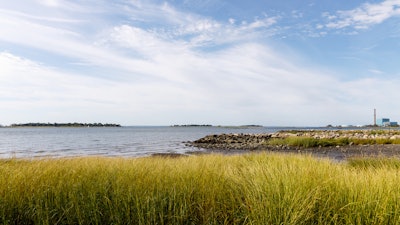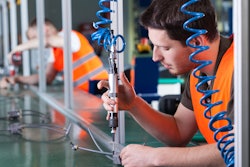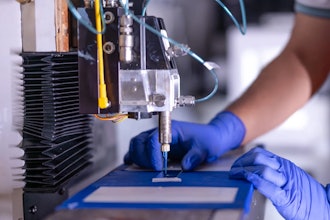
President Joe Biden’s promise to improve the nation’s infrastructure has renewed interest in the decades-old idea of a high-speed railroad connecting New York and Boston, possibly through a 16-mile tunnel under Long Island Sound.
The new North Atlantic Rail plan was developed at University of Pennsylvania planning studios. It calls for improving existing lines and building new infrastructure, including boring that tunnel, to create an electric high-speed line that would allow travel at well over 200 mph and cut the current train trip of about 3 1/2 hours between the two cities to just over 1 1/2 hours, officials said.
Amtrak's current trains can go as fast as 150 mph but travel much slower than that on much of the current aging track.
The estimated cost of the 20-year project is over $100 billion, a figure proponents say is not outrageous, given Biden's promise to invest $2 trillion on clean energy infrastructure. It's the latest in a number of plans discussed since Sen. Claiborne Pell of Rhode Island first began talking about a high-speed rail system for the Northeast the early 1960s.
“This probably should have been done decades ago,” said Hartford Mayor Luke Bronin, who is a co-chair of the coalition of interests pushing the plan. “But we now have a president that has made rail infrastructure a centerpiece of his campaign. We hope that Congress will rise to the moment and embrace the kind of initiative that America has done in the past and needs to do again.”
Robert Yaro, a planner at the University of Pennsylvania and the former president of the Regional Plan Association, developed the latest model. Because of recent improvements in tunneling technology, he said, it's not as far-fetched as it sounds.
“There are 36 tunnels of this length or longer that have been built or are under construction around the world in the last 10 years alone — over 100 in the last 20 years," he said. “This is what the world is doing.”
Critics have dismissed the plan, noting that over the decades, officials have failed to get local and environmental approvals for much smaller transportation ideas, such as an expressway that would link Hartford and Providence, Rhode Island, or even an expansion of state Route 11 in eastern Connecticut, a highway meant to finish a link between Hartford and New London, that currently dead-ends after 7 miles.
U.S. Sen. Richard Blumenthal, a Connecticut Democrat, said that with the commitment of Biden and Transportation Secretary Pete Buttigieg to improving transportation infrastructure, he is among those who believes the time is right to start thinking about improving train travel in the Northeast.
But Blumenthal said the focus should be on rebuilding the Hudson Tunnel in New York and the existing tracks between that city and New Haven, not building an underwater tunnel in an area where the costs could be prohibitive and plans for pipelines have consistently been beaten back because of environmental concerns.
“A massive tunnel could disrupt and destroy precious wildlife and habitat,” Blumenthal said. “I have strong concerns about a tunnel. And I think the costs have been lowballed by this estimate, not to mention the logistical difficulties.”
But Yaro said he and the plan's other architects designed the tunnel to go 100 feet under the bottom of the sound to minimize its effects on the environment. The economic benefits of making travel easier between two economic hubs would outweigh the costs in a region that has 11% of the population and represents 14% of the nation's economy, he said.
“If we aren’t successful, we’ll watch our tax dollars go to other parts of the country,” Yaro said.
While the big-picture planning is important, Bronin said, the first steps are easier and can be started in the next year or two.
“Those include improvements on the New Haven line and the construction of commuter rail service connecting Springfield and Boston,” he said. “Those are near-term, nearly shovel-ready achievable projects that would make a big difference to the region's economy.”
Connecticut state Rep. Roland Lemar, a New Haven Democrat who co-chairs the Connecticut legislature's Transportation Committee, said he would like to see a federal-state partnership to push the North Atlantic Rail project forward.
Rail travel from New Haven to New York takes about 20 minutes longer than it did a few decades ago because of aging infrastructure, he said. And the carbon pollution created by bumper-to-bumper highway traffic should also be considered, he said.
“This has got to be on the table,” he said. "And we have to think about it in terms of what the next 50 years to a century of transportation investment needs to look like."






















